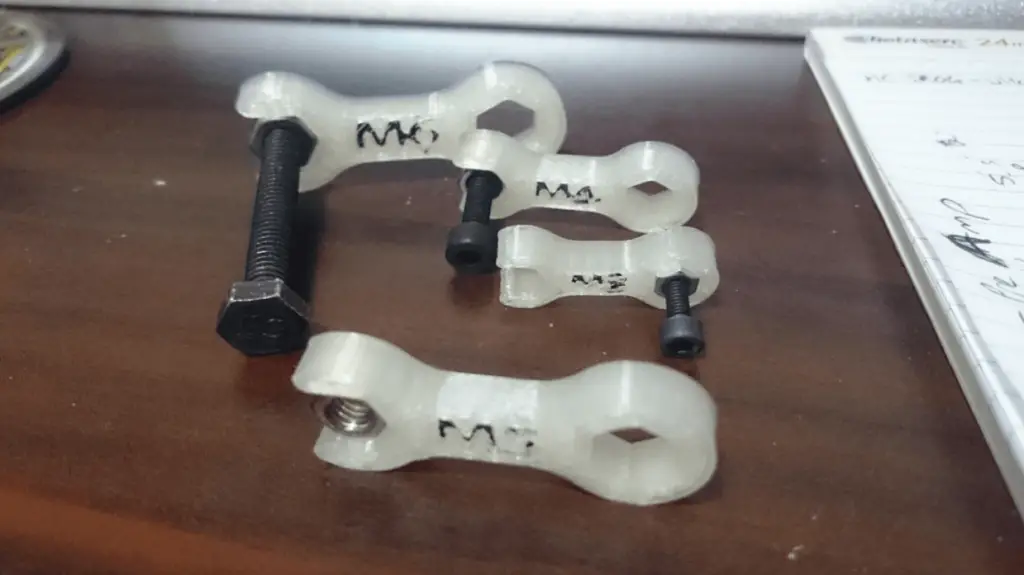3D printers are notoriously cheap to run. However, for many people, they are actually one of the most power-hungry appliances in your home. For most of us, the only thing that might consume more power is a higher-end computer. However, you’re also more likely to have the higher-end computer on for more hours a day – which means your 3D printer power consumption might actually be lower than you think.
In most cases, 3D printers cost anywhere from $0.36-$2.85 per 24 hours of usage. However, eventually, the cost of 3D printing depends on local energy costs. You’ll want to check your contract and rates to see how much you usually pay – which will allow you to directly calculate how much you spend on your Ender 3 printer, per hour of usage.
How Much Power Does an Ender 3 (Pro/V2) 3D Printer Use?
The Creality Ender 3 has a power consumption of up to 360 watts. This means that if you run it at full power, 24/7, you’ll use 3,153 kWh a year. For the average U.S. household, that would increase your average yearly electricity usage by about a third, with the average household electric usage of 10,715 kWh per year. However, it’s unlikely you’d run it at full power or for 24 hours a day.
Nozzle
If you’re printing at 200C, or the standard setting for printing PLA, you’ll normally draw 50 watts while heating the nozzle and 30 watts while printing. That’s obviously much lower than the total maximum power consumption of the Ender 3. That works out to anywhere between $0.03 and $0.125 cents per hour of printing depending on where you are. At the national average of 12 cents per kWh, you’re looking at about half a cent per hour of running the nozzle. Of course, costs will go up if you increase nozzle temperature.
Heating Bed
The heated bed typically requires much more power than the nozzle. Here, you’re usually looking at anywhere from 60-120 watts during normal run-time, depending on how warm you heat the bed too. For example, you can normally expect the bed to pull up to 260 watts while heating up. This should take no more than a few minutes – and will include the time between when you turn the machine on and when the machine meets the pre-set temperature. Afterwards, you’re likely to use about 80 watts at the standard setting of 60C. However, it does work out to about 0.70 kWh per 8 hours of usage – or about $0.06 – $0.25 per hour of printing depending on your electric costs in your state. With the national U.S. average electric cost at 12 cents per kWh, you’d pay about 1 cent per hour of using the bed at 60C. And, of course, costs go up if you run the bed at a higher temperature.
Total
The majority of electric consumption for your Ender 3 printer is the heat bed and the nozzle. While the onboard computer might use some energy, it’s minimal enough that it will make little difference. This means you can normally get a good rough calculation by using the heat bed plus the nozzle. In the case of the Ender 3, you’re likely looking at an average of 1.5 cents per hour of runtime. That will go up or down depending on where you live in the United States. For example, in Idaho you can expect to pay an average of 8 cents per kWh. In Hawaii, it can go up to 33 cents. So, the cost of running a 3D printer greatly varies depending on location.
Total Energy Cost of Printing Per Day
It’s easy to calculate how much energy your printer is using per day. Here, you want to know:
- Your cost per kWh of power
- Watts used
Making this calculation is also relatively easy. For example, if you are paying $0.12 per kWh and you know you’re using the maximum energy for the Ender 3 (360 watts), you can calculate:
(360 x Time of Print) x $0.12
So, (360 x 8 hours) x $0.12 = 2.88 x 0.12 = $0.345
Starting out with 3D printing and want to AVOID rookie MISTAKES?
- Our new Filament Printing 101 Course is just for you! Lean how to create perfect professional prints without all the hassle.
- Don't let common mistakes hold you back, click the link to learn more and get ahead now!
If you were to run a 24-hour print at the much more reasonable 175 watts of power usage, you could calculate it at: (175 x 24) x $0.12 = 4.2 x $0.12 = $0.52.
You can also add to the complexity of the calculation depending on what you’re measuring. For example, if you’re using an energy meter to collect voltage and amps being pulled, you can try:
Cost = AC voltage (V) x average current draw (amps) during print divided by 1000 x time printers are running per day times energy costs times number of printers.
C = (V*I/1000) *t*E*n
- C, Total printer energy costs per day ($/day)
- V, AC Voltage (V)
- I, Average current draw during print (Amps)
- t, time printers are running per day (Hours/day)
- E, Energy cost from utility ($/kWh)
- n, number of printers
Importantly, you can also use a smart plug or similar to collect power usage details. This will normally give you power draw in watts rather than amps, which does simplify the calculation somewhat. Both are good options and cost about the same, depending on what you want.
What to Do to Reduce Electricity Costs of Ender 3
If your Ender 3 is pulling too much power or you want to reduce your home’s energy consumption for other reasons, you can take steps to reduce energy usage. However, for most people, your 3D printer won’t make that large of an impact on your home unless you run it for several hours a day, every day. If you do run it full time, it will make up about 30% of your total energy costs. With an average of 1.5 cents per hour across most of the U.S., you can calculate what you’re spending and if you need to reduce that.
Increase Print Speed
Adjusting your slicer to print faster is one way to reduce the total 3D printing electricity cost. However, it won’t be a simple matter of reducing energy consumption by hours. Instead, forcing the machine to run faster will likely increase watts consumed per hour.
You can also reduce print speed by:
- Lowering the amount of infill – to retain some print strength, stick to 5-15%. 0% infill will print hollow objects. Use lines or zigzag infill for the fastest print speeds.
- Increase skirt/brim speed
- Increase temperature as you increase print speed / try increasing in values of 5C to avoid overheating the nozzle
- Increase travel speed, e.g., the Ender can manage speeds of up to 10/20mm/s
- Increase layer height. It’s normally set to 0.2mm but you can increase this by about 25%
- Reduce shells to 0.8mm, or 2 layers if you’re using a 0.4mm nozzle. This will weaken your outer structure. It may also make the infill visible if your shells are too thin. So, balance this by testing it before you use it on a large or important print.
Keep in mind that all of these steps will reduce the quality of your print. If you’re trying to print high quality, it’s always better to print more slowly and with more infill and thicker shells.
Use a Larger Nozzle
The Ender 3 Pro comes with a 0.4mm nozzle. This allows you to extrude down to 0.2mm if desired. However, if you want to speed up print speeds, you can always swap it out for a larger nozzle. You can use up to 0.8mm. If you’re using wood-fill PLA or similar, this is even desirable.
However, like with many of the measures to increase build-speed, a larger nozzle will decrease print quality. You’re more likely to want this if you print large objects, don’t care about fine details, and don’t care if you have visible print lines.
Reduce Printing
If you’re concerned about costs but don’t want to reduce build quality, printing less is your best option. That might mean printing smaller objects. It might mean being more careful about what objects you choose to print. Or, it might mean spending more time on design and builds to reduce the number of failures or chances of failure.
This obviously isn’t a workable solution, unless you’re printing more than you need. For example, if you frequently print failed projects, investigating why prints fail – such as if they fail to stick to the bed or if the design is bad – can cut the number of hours you spend using the printer.
Do All 3D Printers Use a Lot of Electricity?
Most 3D printers will use anywhere from 50-260 watts when running. However, there are plenty of ways to cut costs, even with the Ender 3. For example, if you print with PLA and PETG, you can sometimes get away with turning the heated bed off altogether. That will cut more than half the power consumption of running your Ender 3. However, it may cause some issues, like the print not sticking to the bed.
Printing with materials that require less heat also allows you to turn down the temperature of the nozzle. This will further reduce costs. However, because the bed makes up 60-75% of total electric power consumption, choosing a material that allows you to turn the bed off will already put a significant dent in total costs.
Otherwise, there’s often very little difference between how 3D printers use power. The vast majority of power consumption relates to heating the bed and the nozzle. If you reduce the heat consumption, you can greatly reduce how much money you spend on it. That means looking at materials first and choosing based on heat requirements.
Conclusion
The Ender 3 uses a maximum of 360 watts at full power. In most cases, you’re more likely to use around 120-170 watts during normal use. If you use materials like PLA that allow a cooler bed, you can cut energy usage even further. At the same time, Ender 3 wattage consumption is just a small percentage of total costs. In most cases, you’re likely spending 70-80% of total costs on filament. So, if you’re spending 1.5 cents per hour on electric costs, you’re probably spending 15 cents per hour on filament. Therefore, if you really want to reduce costs, printing less is the best way to go. Tactics like reducing infill, etc., will also reduce filament usage. On the other hand, if you’re concerned about total power usage and your impact on the environment or similar, turning off the heated bed and printing with PLA will help.




